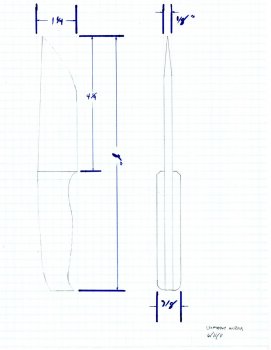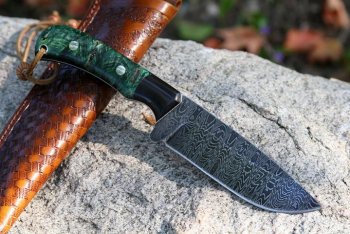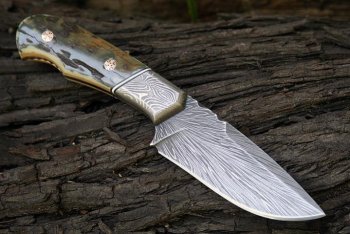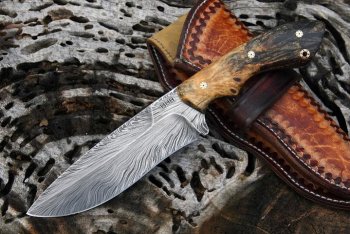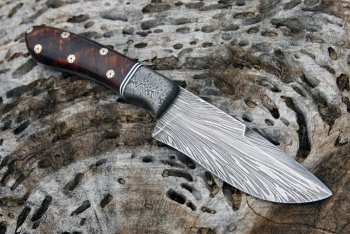McClellan Made Blades
Well-Known Member
Hey Dawgs,
When you think of a hunter style blade what comes to mind? For me, it is the Loveless style drop point, that design is more of a utility type of blade used for cleaning medium to large sized game, with the drop point being great for skinning, the dual function is probably why it is one of the most copied designs ever. When I was looking at what many makers and manufacturers call a hunter really doesn't fit my idea of a hunter, and several even use the term "drop point", while the blade tip is straight or even up swept. But what is the ultimate hunter design? That's easy to use, even for the beginner or first time user.
Last night I went surfing for "hunters", I found everything from the old up swept hunter with almost no belly, to the "Buffalo Skinner" that is almost all belly, to what looked like a generic blade shape that was straight backed from spine to the tip and called a hunter.
My purpose is not to split hairs about which hunter is the best or which design is the best. The purpose for this post is to open a discussion about what you DAWGS like in a blade used for hunting. Utility type blades are not what I'm looking for, but if the function is there, I'd like to see it. I know a skinner blade isn't good as a caper, and a caper won't blaze many trails, so let's try to keep this a little more specific, let's look at blade designs that are good skinner's, with the capacity for other hunting camp chores. Most hunters have about a 4" blade, if you like a longer or smaller sized blade, tell me why.
For all the makers chiming in, also include the Rockwell hardness you like.
OK, I've given you all a lot to work with, can't wait to see the responses, Thanks Dawgs, Rex
When you think of a hunter style blade what comes to mind? For me, it is the Loveless style drop point, that design is more of a utility type of blade used for cleaning medium to large sized game, with the drop point being great for skinning, the dual function is probably why it is one of the most copied designs ever. When I was looking at what many makers and manufacturers call a hunter really doesn't fit my idea of a hunter, and several even use the term "drop point", while the blade tip is straight or even up swept. But what is the ultimate hunter design? That's easy to use, even for the beginner or first time user.
Last night I went surfing for "hunters", I found everything from the old up swept hunter with almost no belly, to the "Buffalo Skinner" that is almost all belly, to what looked like a generic blade shape that was straight backed from spine to the tip and called a hunter.
My purpose is not to split hairs about which hunter is the best or which design is the best. The purpose for this post is to open a discussion about what you DAWGS like in a blade used for hunting. Utility type blades are not what I'm looking for, but if the function is there, I'd like to see it. I know a skinner blade isn't good as a caper, and a caper won't blaze many trails, so let's try to keep this a little more specific, let's look at blade designs that are good skinner's, with the capacity for other hunting camp chores. Most hunters have about a 4" blade, if you like a longer or smaller sized blade, tell me why.
For all the makers chiming in, also include the Rockwell hardness you like.
OK, I've given you all a lot to work with, can't wait to see the responses, Thanks Dawgs, Rex



